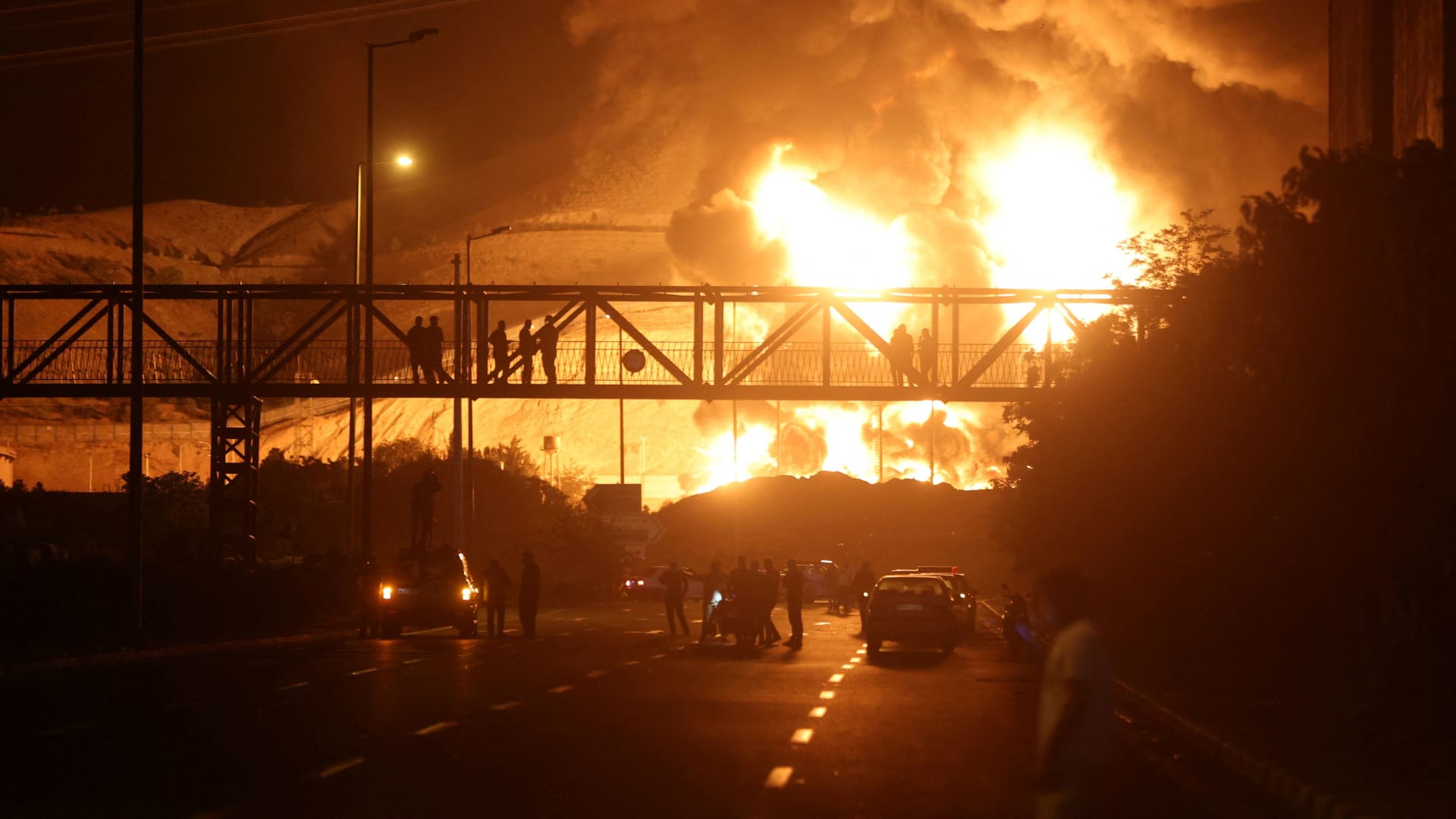
Oil prices jump 4% after U.S. strikes on Iran raise fears of supply disruption
How did your country report this? Share your view in the comments.
Diverging Reports Breakdown
Oil prices jump more than 2% after U.S. strikes on Iran raise fears of supply disruption
U.S. crude oil on Sunday evening rose $1.76, or 2.38%, to $75.60 per barrel. Global benchmark Brent was up 2.34, to $78.81 per barrel, according to S&P Global Platts. Worst-case scenario for the oil market would be an attempt by Iran to close the Strait of Hormuz. 20 million barrels per day of crude, or 20% of global consumption, flowed through the strait in 2024, the Energy Information Administration said. Iran’s foreign minister said Sunday the Islamic Republic reserves “all options” to defend its sovereignty. The initial rise in oil prices could ease if Iran does not respond.
People watch from a bridge as flames from an Israeli attack rise from Sharan Oil depot, following Israeli strikes on Iran, in Tehran, Iran, June 15, 2025. Majid Asgaripour | Via Reuters
Oil futures jumped more than 2% at the start of the first trading session since the U.S. launched direct attacks against Iran, casting further shadow over the supply outlook in the embattled oil-rich Middle Eastern region. U.S. crude oil on Sunday evening rose $1.76, or 2.38%, to $75.60 per barrel, while global benchmark Brent was up $1.80, or 2.34%, to $78.81 per barrel. Brent had jumped 5.7% to crack $81 before easing. President Donald Trump on Saturday surprised markets with the announcement that Washington had directly entered the Iran-Israel conflict, launching attacks against three Iranian nuclear sites in Fordo, Natanz and Isfahan. Investors are now looking to see how Iran will respond to the unprecedented U.S. strikes. Iran’s foreign minister said Sunday the Islamic Republic reserves “all options” to defend its sovereignty. The initial rise in oil prices could ease if Iran does not respond, according to S&P Global Platts.
Strait of Hormuz
The worst-case-scenario for the oil market would be an attempt by Iran to close the Strait of Hormuz, according to energy analysts. Some 20 million barrels per day of crude, or 20% of global consumption, flowed through the strait in 2024, according to the Energy Information Administration. Iranian state media reported that Iran’s parliament had backed closing of the strait, citing a senior lawmaker. However, the final decision to close the strait lies with Iran’s national security council, according to the report. U.S. Secretary of State Marco Rubio has warned Iran against attempting to close the strait. It would be “economic suicide” for the Islamic Republic because their exports pass through the waterway, Rubio said. “We retain options to deal with that,” Rubio told Fox News in an interview Sunday. “It would hurt other countries’ economies a lot worse than ours. It would be, I think, a massive escalation that would merit a response, not just by us, but from others.” Iran produced 3.3 million bpd in May, according to OPEC’s monthly oil market report released in June, which cites independent analyst sources. It exported 1.84 million bpd last month, with the vast majority sold to China, according to data from Kpler. Rubio called on China to use its influence to prevent Tehran from closing the strait. About half of China’s waterborne crude oil imports comes from the Persian Gulf, per Kpler. “I encourage the Chinese government in Beijing to call them about that, because they heavily depend on the Straits of Hormuz for their oil,” Rubio said. Investors are also watching the odds of a further destabilization of the Iranian regime as a result of U.S.-Israeli hostilities, given the example of the long-spanning impact that the 2011 NATO-led ousting of Muammar Gaddafi had on Libya’s supplies.
Regional tensions
